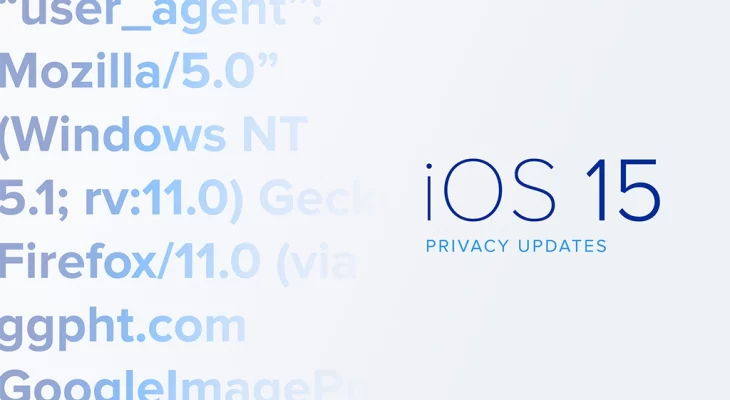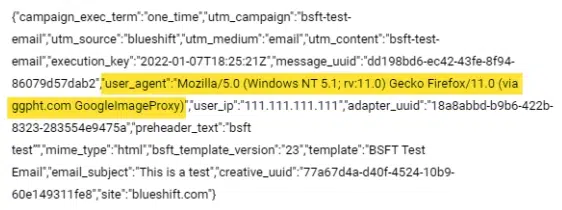We’ve had some time to marinate and let all of the recent Apple iOS 15 changes sink in. After gathering our wits, we did some testing on this privacy phenomenon that is Mail Privacy Protection. We found some interesting things, so let’s talk about it.
iOS 15 Updates: Keep Adapting to Mail Privacy & Proxies

WHAT WE KNOW
Mail Privacy Protection
The email elephant in the room has been the concern with inflated open rates and what to do about them. We previously determined that, in order for prefetched opens to occur, there are a few things that must first happen. The user must, of course, be using iOS 15, have opted-in for Mail Privacy Protection, and have their email inbox synced with the Apple Mail App. However, there are a couple more requirements that need to be added to the list. The complete list of requirements are as follows:
- The device must be updated to iOS 15
- The device must be opted in to Protect Mail Activity
- The device must have the email inbox synced to the Apple Mail App
- The device must be connected to WiFi (just internet connection is not sufficient)
- The device must be charging (wired or wireless is sufficient)
With all of these items checked off, Apple is ready to prefetch images and inflate those open rates. We also determined that the timing of prefetched opens is not always instantaneous. It was previously assumed that Apple would immediately prefetch new emails upon arrival and thus show engagement very quickly. However, through our testing, we saw delays of up to about 25 minutes before impressions were reported.
We were also able to conclude that the status of the Apple Mail App does not matter. The Apple Mail App can be actively open, in the background, or closed completely, and the prefetch action will still occur if the above five criteria are met.
Some Technical Background Info
It seems that Apple has timed rotations where bulk fetch actions occur. There are other contributing factors (such as items four and five on the requirement list above) that can make this rotation difficult to pinpoint, and it is possible they are not at set intervals. For this reason, it can be beneficial to educate oneself on how to identify prefetched opens.
While it is possible other platforms or filters use the same user agent, we have found that Apple prefetches are currently categorized as “user_agent”:”Mozilla/5.0.” For example, we did notice that prior to iOS 15, many of our clients had engagement from user agents matching Mozilla/5.0 on a small scale (1% or less). However, after the introduction of iOS 15, that number has jumped significantly (>10% of overall engagement) when examining the same client’s data. Anytime an open or click action is registered on Blueshift, the event is logged in the user campaign report. This report is exportable, and this user agent can be identified within.
How Mail Proxy Plays a Role
Mail proxy and SMTP proxy servers have been around for a long time and serve to complicate things just a tad more for us. In a nutshell, a proxy server can completely mask the mail recipient’s data so that information such as the user agent is not made available at all. In those instances, the user agent field would simply be blank. So, why does this matter in the conversation about Mail Privacy Protection? This proxied open or click metric can, in actuality, be a legitimate non-machine engagement or a prefetched open.
Tangentially, Google does a sort of non-traditional proxy when accessing email across any of their applications. While Google does not completely mask a user agent, it will provide a standard user agent that is the same regardless of the Google platform on which you engaged with your email. To specify, the same user agent will be reported from the Gmail mobile app as well as from gmail.com.
NOW WHAT?
Key Takeaways
It’s time to roll with the punches and keep evolving how we interpret all the information and data at our disposal. The reality is that open rates are going to be inflated. While there is a laundry list of dominoes that need to fall down in order for prefetch opens to trigger, your audience will have to charge their phones and be connected to WiFi simultaneously.
If one of your customer KPIs is CTOR, it will be a good idea to shift that benchmark. Given that click rates are not going to be inflated, click-to-open rates are going to take a negative swing if they haven’t already. If a machine open only occurs on WiFi and while a phone is charging, you may realize that some of your audience does not fit that criteria during the day, so any engagement during working hours is legitimate. With all this in mind, we’d recommend looking at a subscriber’s engagement data more holistically. Click data individually is still very relevant, so combine this with sign-up dates, visited webpages, purchase histories, and any other tracked events to create new segments and benchmarks.
While it is going to be more difficult to pinpoint engaged users, begin thinking about your audience on a more personal level. To strengthen your deliverability strategy in response to these changes, use first-party data to more accurately build customer profiles.
THE POWER OF DATA
Blueshift Enters the Arena
Opens are not the end-all-be-all, but they do have their place as a high-level metric for customer engagement. For that reason, we’re using the research data we’ve gathered to help our platform adapt.
We’ve discussed the three possible types of open engagement: prefetched, proxied, and regular. Using these three categorizations, we plan to assign attributes in Blueshift to differentiate these event types so that they can be viewed on the fly. As mentioned above, prefetched and proxied opens do have some grey area, but looking at these metrics holistically will provide a pretty accurate view of your email infrastructure.
It’s a lot to take in, but the ultimate goal is to put the power of data back into your — the marketer’s — hands. Change can be intimidating, but adapting to change will help you become a better marketer and us become an even better customer data platform.
Get in touch with our team of deliverability experts to develop a plan of action in response to iOS 15 today!




